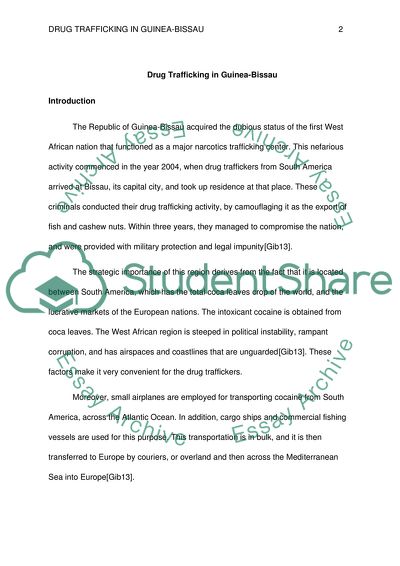Cite this document
(DRUG TRAFFICKING IN GUINEA BISSAU Coursework Example | Topics and Well Written Essays - 2500 words, n.d.)
DRUG TRAFFICKING IN GUINEA BISSAU Coursework Example | Topics and Well Written Essays - 2500 words. https://studentshare.org/sociology/1852331-drug-trafficking-in-guinea-bissau
DRUG TRAFFICKING IN GUINEA BISSAU Coursework Example | Topics and Well Written Essays - 2500 words. https://studentshare.org/sociology/1852331-drug-trafficking-in-guinea-bissau
(DRUG TRAFFICKING IN GUINEA BISSAU Coursework Example | Topics and Well Written Essays - 2500 Words)
DRUG TRAFFICKING IN GUINEA BISSAU Coursework Example | Topics and Well Written Essays - 2500 Words. https://studentshare.org/sociology/1852331-drug-trafficking-in-guinea-bissau.
DRUG TRAFFICKING IN GUINEA BISSAU Coursework Example | Topics and Well Written Essays - 2500 Words. https://studentshare.org/sociology/1852331-drug-trafficking-in-guinea-bissau.
“DRUG TRAFFICKING IN GUINEA BISSAU Coursework Example | Topics and Well Written Essays - 2500 Words”. https://studentshare.org/sociology/1852331-drug-trafficking-in-guinea-bissau.


